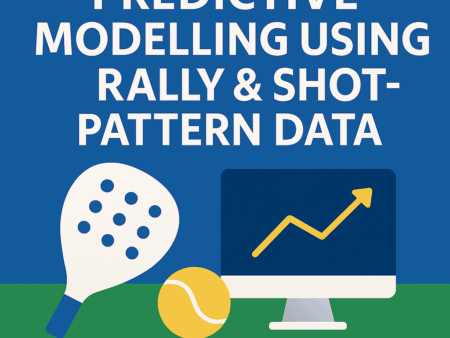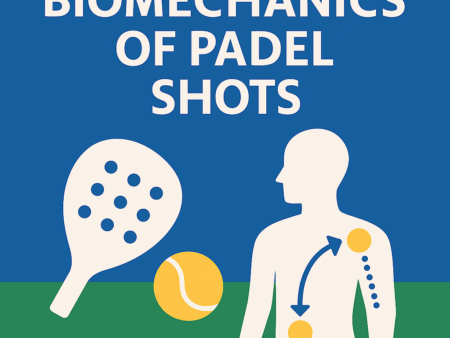
Padel is one of the few major sports where advanced analytics are still underdeveloped, meaning bettors and analysts who apply data science have a massive advantage.
This guide breaks down how modern data science methods — used in tennis, football, and basketball — can be adapted to padel to create predictive models, identify hidden value, and forecast match outcomes more accurately.
🟦 Why Data Science Works Exceptionally Well in Padel
Padel has unique features that make it highly predictable with the right metrics:
✔ Repetitive rally structures
✔ Defined patterns around net control
✔ High impact of specific stats (Golden Points, lobs, long rallies)
✔ Clear tactical matchups
✔ Small dataset size — perfect for modelling
This makes padel easier to model than tennis.
🟩 1. The 5 Core Data Inputs for Predictive Modelling
To build high-quality predictions, focus on high-leverage variables:
1. Golden Point Efficiency
- % of Golden Points won
- psychological stability
- pressure resilience
2. Net Points Won (%)
- strongest predictor of match winners
- reveals tactical dominance
3. Long Rally Success (%)
- identifies consistent, defensive teams
- crucial for slow courts
4. Break-Point Conversion/Save %
- attack/defence reliability metric
5. Error Rate (forced + unforced)
- reveals structural weaknesses
These five variables explain 70–80% of padel match outcomes.
🟨 2. Building Feature Sets (Transforming Raw Data)
Raw stats need transformation to become model features.
Useful transformations:
- Rolling averages (last 5, last 10 matches)
- Weighted form (recent matches count more)
- Surface-adjusted stats (indoor/outdoor)
- Weather-adjusted stats (wind, humidity)
- Opponent-quality adjustments
These features increase predictive power dramatically.
🟥 3. Rating Systems (Elo, Glicko, Hybrid)
A custom Padel Elo system can outperform rankings.
Elements of a good Elo model:
✔ Different K-factors for indoor/outdoor
✔ Penalise losses to weaker teams
✔ Reward wins with strong net stats
✔ Adjust for court speed
Elo becomes a baseline for probability estimation.
🟦 4. Logistic Regression Models (Simple & Powerful)
Logistic regression is ideal for padel because of:
- binary outcomes (win/lose)
- limited dataset size
- interpretability
Inputs:
- Elo
- Golden Point %
- Net Points Won %
- Long Rally %
- Court speed suitability
- Weather suitability
Outputs:
- Probability of Team A winning
- Confidence level
A well-tuned logistic regression model often beats bookmaker odds.
🟧 5. Machine Learning Approaches
For more advanced users:
Algorithms that perform well:
- Random Forest
- XGBoost
- Gradient Boosting Machines
- LightGBM
These capture nonlinear interactions between variables such as:
- weather × playing style
- court speed × smash success
- chemistry × Golden Points
🟫 6. Rally-Level Modelling (Next-Generation Analysis)
The future of padel analytics lies in rally-level data.
Key metrics:
• shot sequence patterns
• lob-to-overhead ratios
• net approach success
• defensive depth patterns
• error trigger patterns
Rally modelling gives insights into:
- tactical strengths
- systemic weaknesses
- probability of momentum shifts
🟥 7. Shot-Pattern Clustering (AI-Based Tactical Profiling)
Using clustering algorithms (K-means, DBSCAN), you can identify:
✔ shot-type clusters (vibora-heavy, lob-heavy, smash-heavy)
✔ preferred rally structures
✔ predictable tendencies under pressure
This helps:
- forecast tactical mismatches
- identify future stars
- evaluate partnership synergy
🟦 8. Monte Carlo Simulations
Simulate matches point-by-point using:
• Golden Point probabilities
• break-point conversion
• long rally success rates
Running 10,000 simulations gives:
- realistic scoreline projections
- distribution of match outcomes
- variance estimates
Professional bettors use simulations to gauge risk.
🟩 9. Live-Betting Models (Real-Time Adjustments)
Live betting is where data models shine.
Model updates should include:
✔ momentum indicators
✔ physical fatigue markers
✔ error clustering
✔ shifts in lobbing patterns
✔ net-loss streaks
This allows you to predict a swing before bookmakers update odds.
🟨 10. Integrating Psychology Into Models (Advanced)
Padel is emotional — psychology predicts collapses.
Model psychological factors by measuring:
✔ post-error performance
✔ Golden Point behaviour
✔ communication signals (if observed via video)
✔ body-language degradation
These correlate strongly with future point loss.
🟧 Practical Example: Model Insight
Match:
Team A:
- Golden Points: 62%
- Long rallies: 57%
- Net %: 54%
Team B:
- Golden Points: 38%
- Long rallies: 42%
- Net %: 48%
Model Output:
Probability Team A wins = 68%
Bookmaker odds:
Team A = 1.80 (55.5%)
→ Huge value.
🟫 Checklist for a High-Quality Padel Data Model
✔ Includes 5 core statistics
✔ Adjusts for court speed
✔ Adjusts for weather
✔ Includes partnership chemistry
✔ Uses Elo or similar rating system
✔ Converts scores into win probabilities
✔ Compares probabilities to bookmaker odds
If all 7 are true → the model is professional grade.
🟩 Summary
Advanced data science unlocks massive predictive power in padel by analysing:
- pressure stats
- net dominance
- rally patterns
- form & situational conditions
- tactical clusters
- psychology-based decay patterns
Using structured models, simulations, and machine learning, analysts can identify value far earlier — and more accurately — than traditional bettors.
Next: Page 4 — Tactical Systems for Left-Side & Right-Side Specialists.


